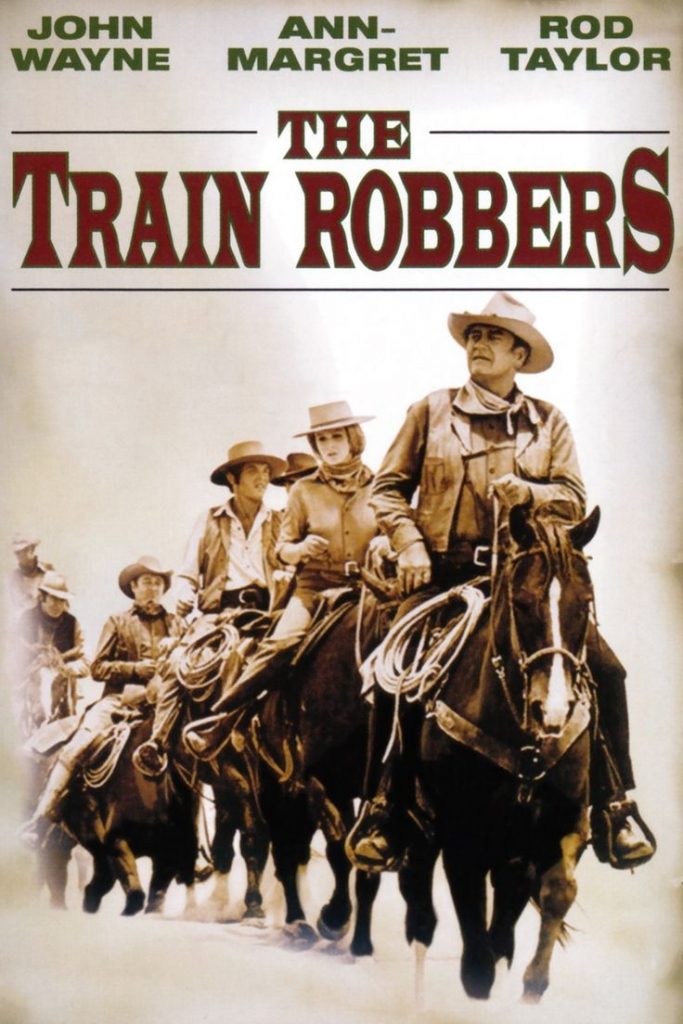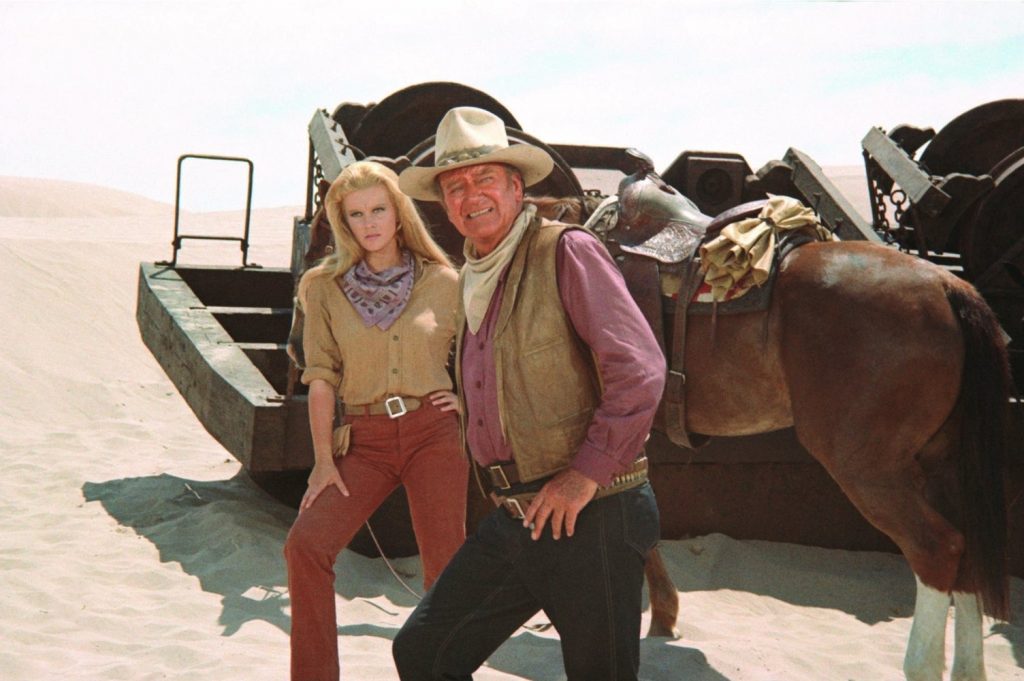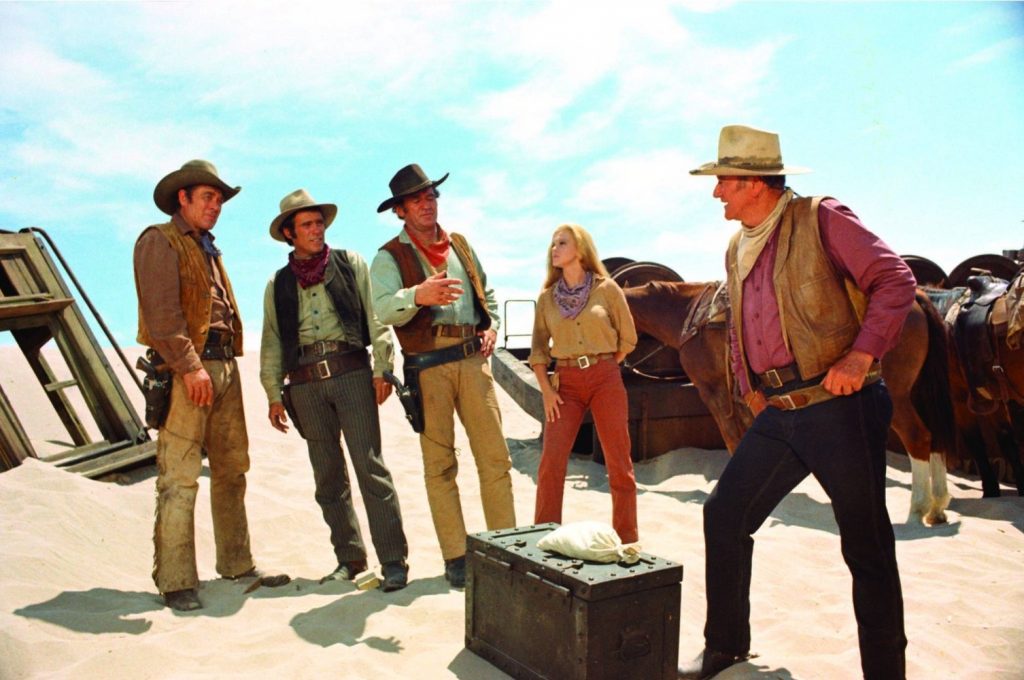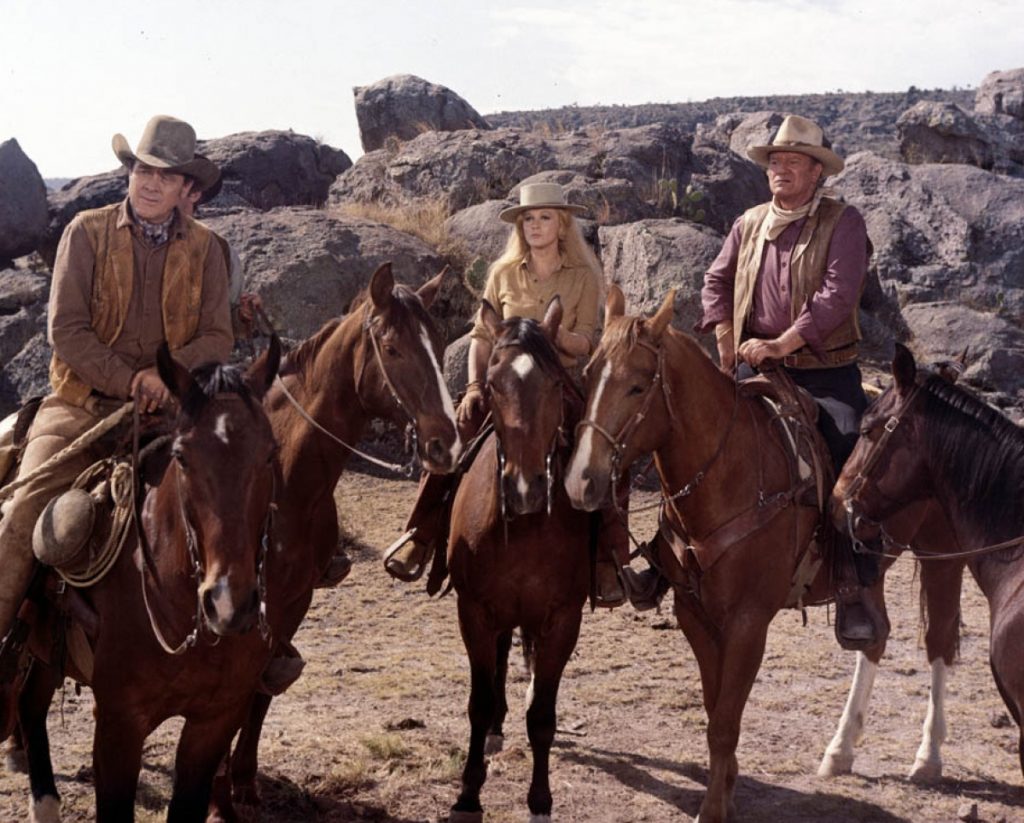This action-western, directed by Burt Kennedy, stars the aging John Wayne, the still sexy Ann-Margret, the still handsome Rod Taylor, and character actor Ricardo Montalban.

Wayne plays a gunhand named Lane (a reference to Shane?), who is hired by a widow named Mrs. Lowe (Ann-Margret) to find the gold stolen by her husband so that she may return it and start a fresh, cleaner chapter in her life.
However, once they cross the border into Mexico to recover the loot, they discover two very different pursuers: a large group of bandidos and a lone horseman (Montalban), both of whom know their every move.
Detailed Synopsis
After her husband]s death, Mrs. Lowe (Ann-Margret) heads to the location of the half million dollars that her late husband Matt had stolen during a train robbery. Her motivation, she says, is honor, aiming to clear the family name for her son. Instead, Lane (Wayne) convinces her to retrieve the gold so she can collect the $50,000 reward offered by the railroad for its return.
Lane recruits some old friends to assist him in retrieving the gold for a share of the reward. Meanwhile, the original train robbers have gathered a gang, trying to get the gold at any cost.
As they all journey into Mexico in search of the hidden gold they are followed by a Pinkerton agent (Ricardo Montalban).
After a series of adventures they return to Texas with the gold to face one final battle. The next day Lane and his men put Mrs. Lowe on a train to return the gold and tell her she can keep the reward for herself and her son.
However, some disturbing truth emerges: Pinkerton Agent tells them, just as the train is pulling out, that Matt Lowe was never married and that Mrs. Lowe is a prostitute named Lilly (emphasizing, with two ll), who had managed to fool them into helping her get the gold for herself.
Lane has the final word, when he leads his gang to rob the train. End credits roll, as last sentence is heard, “Something to do.”

As usual, Wayne’s Lane gives some “macho” advice to members of the younger generation, telling one, “you’re a man, you are stuck with it.”
At the time, Wayne singled out The Train Robbers as “one of the few films that offered a good part for a woman” (Ann-Margret’s widow). A nocturnal scene in which Ann-Margret gets drunk and rambles before falling asleep, gives her a chance to show her charm and acting skills.
With the exception of Clint Eastwood and Sam Peckinpah, who made some good westerns in the 1970s, the genre was all but vanished from mainstream Hollywood cinema.
In three years, Wayne would make what turned out to be his last (and one of the best) picture, The Shootist in 1976; he died in 1979 of cancer.
Wayne’s declining faculties are built into the narrative, including the huge gap between his age, 66, and Ann-Margret’s, 32; there’s some innuendos of erotic tension but no love affair between the two. When she suggests a reuntion, Lane claims, “I’ve got a saddle that’s older than you!”
Overall, Kennedy’s movie is a weak, tired, and lazy Western when placed against the broader context of Wayne’s career. The film is too verbose, lacking much dramatic action.
Nut production values are good: Shot in nice Technicolor, photography took place around the Sierra de Organos National Park in Somberete, Mexico.
Released in 1973, the movie was a commercial failure, barely recouping his budget of $2.5 milliom, butit kept the Duke working and in the public eye.
Cast
John Wayne as Lane
Ann-Margret as Lowe
Rod Taylor as Grady
Ben Johnson as Jesse James
Christopher George as Calhoun James
Bobby Vinton as Ben Young
Jerry Gatlin as Sam Turne
Ricardo Montalban as The Pinkerton Man











